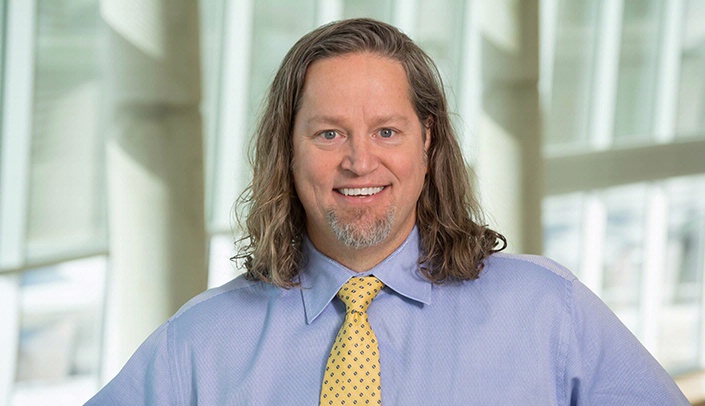There is a great weight bearing down on Nebraska.
Nearly one in three Nebraskans is obese.
“Nebraskans, like most people in the U.S., need strategies to help them fight the battle of the bulge,” said Paul Estabrooks, Ph.D., the first Harold M. Maurer Distinguished Chair of Health Promotion, Social and Behavioral Health in the College of Public Health.
Nebraska is ranked the 10th healthiest state in the U.S., but as far as obesity goes, it is 29th at 30.2 percent. By comparison, Hawaii is No. 1 in the U.S. at 22.1 percent obesity.
This ranking puts Nebraska just over the national average of 29.6 percent obese, according to the 2015 annual America’s Health Rankings report produced by the United Health Foundation.
Obesity also is a leading factor in such preventable conditions as heart disease, type 2 diabetes, stroke, cancer, hypertension, liver disease, kidney disease, Alzheimer’s disease, dementia, respiratory conditions and osteoarthritis.
Dr. Estabrooks, who joined UNMC in January, wants to change Nebraska’s health statistics and move the state’s ranking to No. 1 by 2020. He plans to use community-based health efforts and research to bring the collective weight down and, as a result, lower the incidence of diabetes, heart disease, and some forms of cancer.
He has some ideas to help him achieve those goals.
The first is to help transform primary care so that physicians can get information on patient behaviors and know when one of their patients is ready to talk about physical activity, nutrition or weight control.
Dr. Estabrooks, working with other professors from UNMC, the University of Nebraska-Lincoln and the University of Nebraska at Kearney, says their Food for Health grant has a goal “to help primary care practices use patient-centered strategies to engage patients in weight control activities, get them to lose a little weight and then, perhaps most importantly, get them to sustain that weight loss for a long period of time.” Dr. Estabrooks hopes they can prepare a larger NIH proposal to submit by October.
A second initiative is a worksite weight loss program for small and medium businesses in Omaha. “Small group employers usually don’t have funded workplace wellness programs. Our Center for Reducing Health Disparities in the college has collaborations with Methodist Hospital, CHI, Douglas County Health Department and the Mexican Consulate – all great partners to develop incentive programs to encourage weight loss in the workplace.”
“We will work with systems that are already in place – primary care providers, employers and medical centers – to encourage people to eat healthier and exercise at least 150 minutes a week,” he said.
“The idea is to give providers information that adds value to what they are already doing. The goal is to improve patient outcomes through prevention,” Dr. Estabrooks said.
Healthy eating will be encouraged using MyPlate recommendations, which call for meals to consist of fruits and vegetables that cover one-half of a plate, with the remainder divided between lean protein and whole grains.
“The people of this state have been really welcoming and I am excited by the prospect of giving back by helping to develop new resources that lead to better health.”
Web extras
Read the United Health Foundation 2015 Annual Report
Find out more about MyPlate
View Nebraska’s obesity statistics for 2015.
